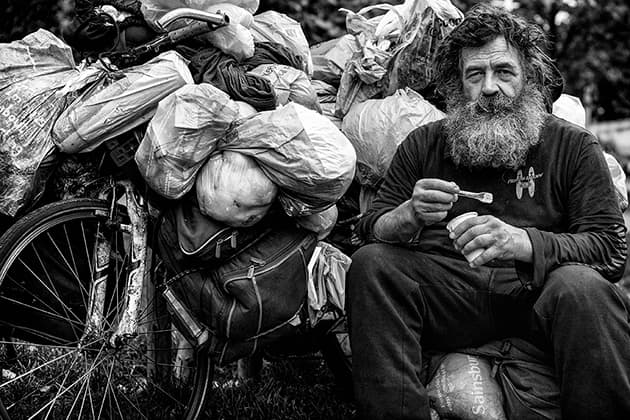Gavin Mills
Gavin is a noted street, documentary and music photographer, and a regular participant in Leica meets all over the world. His images have been widely published in the national press and photography magazines. Visit www.gavinmillsphotography.com
1. Feel the fear and do it anyway
Asking a complete stranger if you can take their picture can be pretty scary. Maybe it’s a fear of rejection imagining all the terrible things they might say, but in reality the fear is usually worse than the actual rejection itself. If someone refuses then it’s usually just a polite, ‘No thanks’. I’ve never encountered anybody who was angry or annoyed by me asking. I still feel nervous sometimes, but the more you do it the easier it gets. A surprising fact is that a lot of people will actually say yes (about 90 per cent).
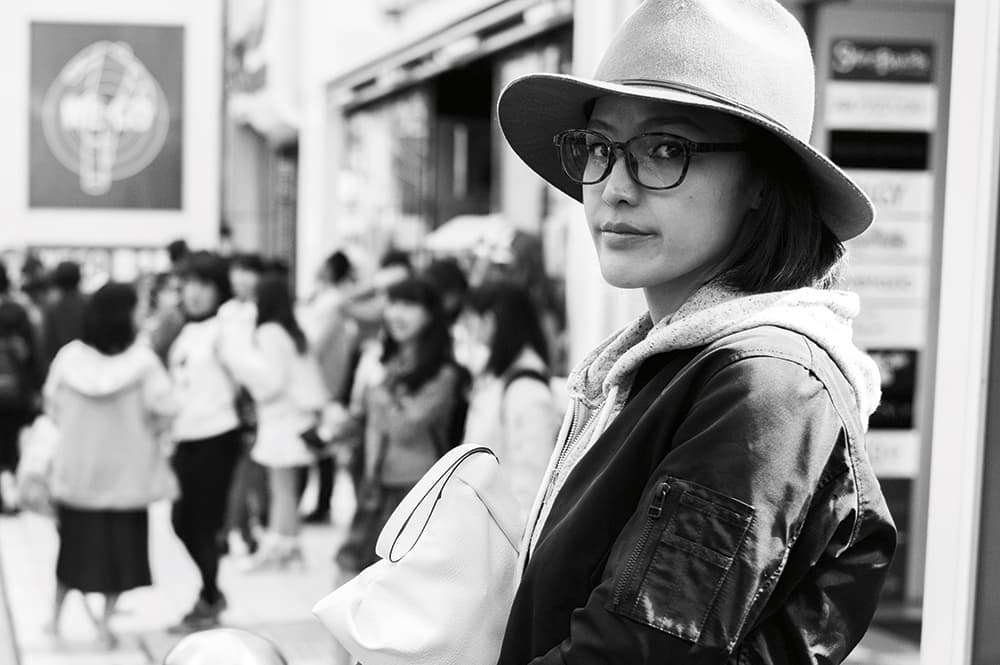
By blurring out the background, Gavin still keeps the context of Tokyo without taking attention away from the subject. Photo by Gavin Mills
2. It’s all in the approach
For street portraits, approach subjects with a big, friendly smile and be polite and confident. When I ask someone if I can take their picture, I often pick out the thing that drew me to them in the first place; it gives me a place to start building a conversation from. Maybe they have a cool style, a nice hat, a beautiful smile, or a great face; keep it positive, as everyone loves a compliment. I often used to say that I was studying street photography and doing a project about whatever fits the person. More people than you might imagine are glad to help when they believe they are helping someone, and by approaching them in the right way you have already built a bit of a relationship.
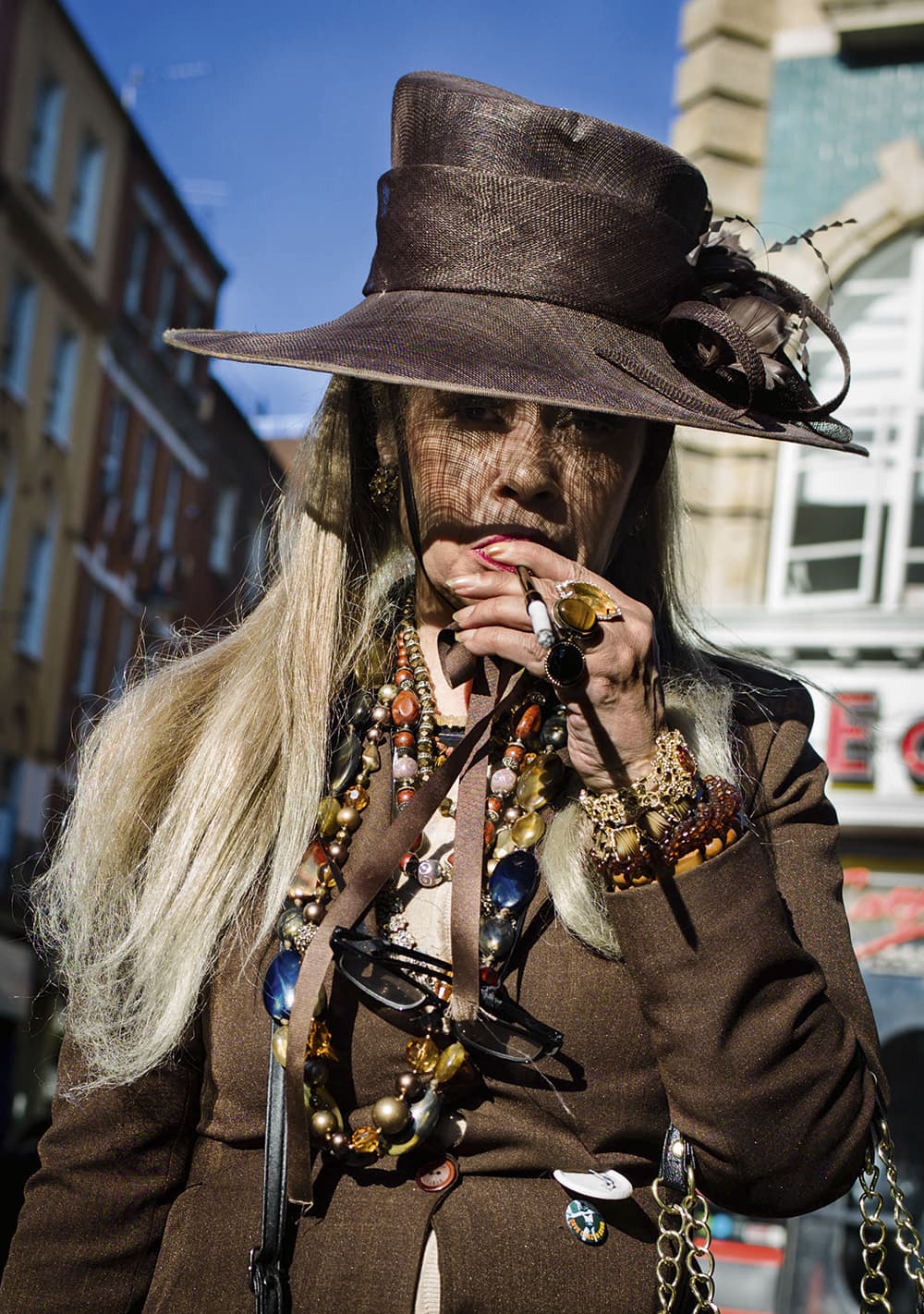
As you have just seconds to assess the light and the background before taking a street portrait, you may have to ask the subject to move to a better spot. Photo by Gavin Mills
3. Look for suitable backgrounds and light
Now that you’ve got your willing subject in front of you, quickly assess your surroundings to choose the most suitable background and be aware of available light for the shot. It’s easy in the excitement to forget about the technical side of street photography. So if possible, consider the lighting and the background before even making the initial approach. Sometimes I might ask the subject to move into a better background or light situation, but don’t push people’s patience too far.
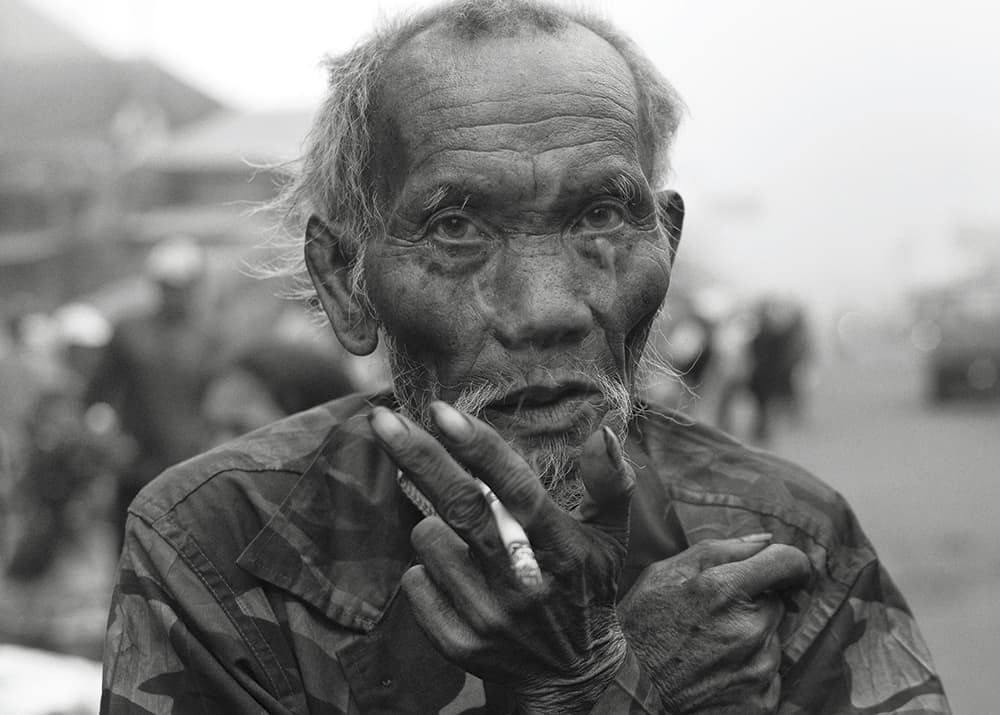
4. Build a rapport
Keeping a conversation going for a while and building trust between you and the subject on the street is almost always going to result in a better photo. If you keep a conversation going, you may even be able to ask him or her to move to a better location or area of light. Pointing a camera in somebody’s face without any kind of rapport is unlikely to result in great shots – unless you are Bruce Gilden. While you don’t need grinning portraits, you don’t want annoyance showing in the eyes of the subject, either.
Marc Fairhurst
Originally from Liverpool, Marc is a London-based photographer who was named one of Britain’s top street photographers by the Interactive Design Institute (www.idesigni.co.uk). He is a regular contributor to the London Street Photography Symposium, and specialises in the quirky, humorous and unusual, as well as an ongoing project on the English. Visit www.marcfairhurst.com
5. Don’t conform to rules
There is no rule that you must take a candid photograph for it to qualify as street photography. Many of the subjects shot by the best contemporary street photographers are fully aware they are having their photograph taken. Some street photographers fully engage with their subjects in order to make a striking and more powerful image. There’s no need to sneak around or find the nearest bush to linger in. Often, you may be spotted but your subject may simply look away. It also helps to be quick in these situations. If you hesitate too long, you may get eye contact where you simply don’t want it. Sometimes eye contact can kill a shot, and sometimes it can help lift the frame.
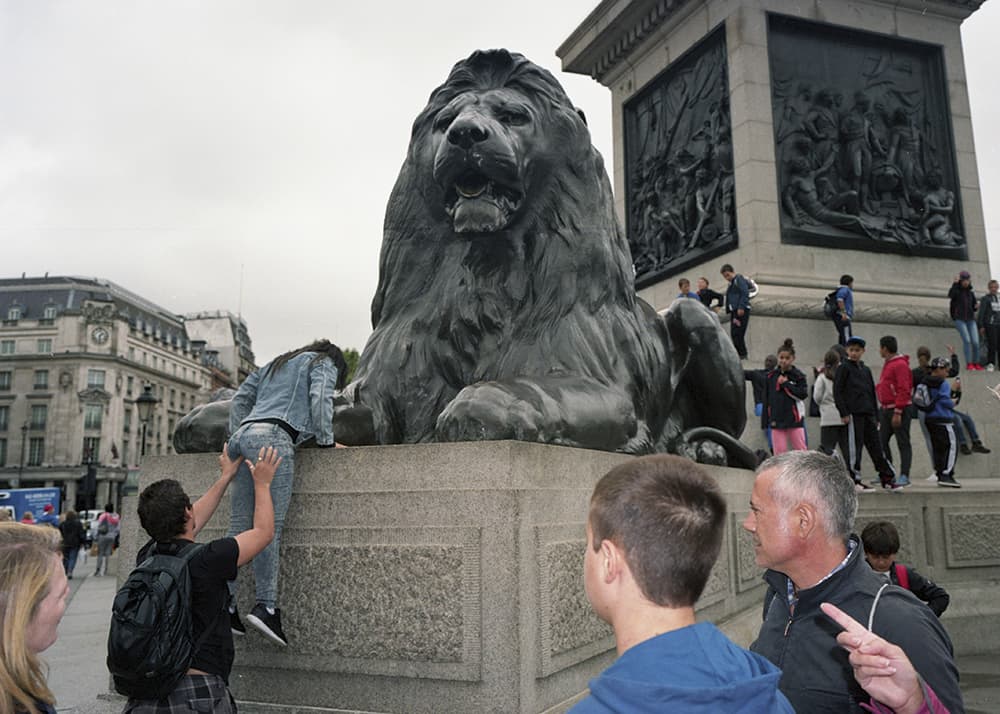
Humour plays an important part in a lot of good street photography, so keep your eyes peeled for quirky juxtapositions, coincidences and visual puns. Photo by Marc Fairhurst
6. Find something to focus on
It can be extremely frustrating to wander around for hours while nothing seems to happen. Forget trying to find the weird and the unusual to begin with – it will drive you mad (although if the opportunity arises, grab it). Instead, create an idea or project for yourself that is based on where you live and document it. More often than not, situations will develop within this, and you’ll be there. Martin Parr and the late Tony Ray-Jones would often head to places and create bodies of work around the place or circumstance. Also, use a notebook (traditional or digital) and make note of the places you find appealing, and keep returning to those.
7. Be aware of the entire frame
It’s easy to spot a situation unfolding before you and develop tunnel vision – where you have singled someone out and quickly grabbed the moment without consideration for everything else in the frame or in the distance. Always consider the environment around the subject and where you place them within it. Try not to mess with things in post-processing too much – it’s not good practice to try to salvage what you can from bad photographs. They’ll forever remain bad photographs, and no amount of cropping and converting will change that. If you get bogged down in selecting pictures, ask a trusted peer for advice, or get feedback from street forums online.

If you shoot in colour, make the most of contrasting hues and strong graphic shapes for maximum effect. Photo by Marc Fairhurst
8. Forget about the best gear
In an ideal world, we’d all be taking amazing street photographs. However, it’s easy to fall into the trap of thinking that we must get the best camera available, or indeed the same camera that was used on a photograph that has impressed us. What matters is the shot you choose to take, not the camera you choose to buy. The same can be said about style. Of course, you shouldn’t stop trying different techniques, and you shouldn’t think that producing work that follows contemporary popular style will bring you success and glory. The world already has Martin Parr or Bruce Gilden, so it doesn’t need a pale imitation of their work from you.
9. Study the work of greats
Look at how great photographers have framed everything within the photograph. How have they balanced everyone and everything within the situation? When I began street photography, I headed for the work of Tony Ray-Jones, and I didn’t stop until it became normal for me to try to compose everything within my frame in the way that he had done. So find someone you really love within street photography and mimic them. You may not come across situations as they have, but there’s so much more going on in their frames for you to study and try out. And when you’re done mimicking them, ditch them and apply all the knowledge you have gained to your own work.
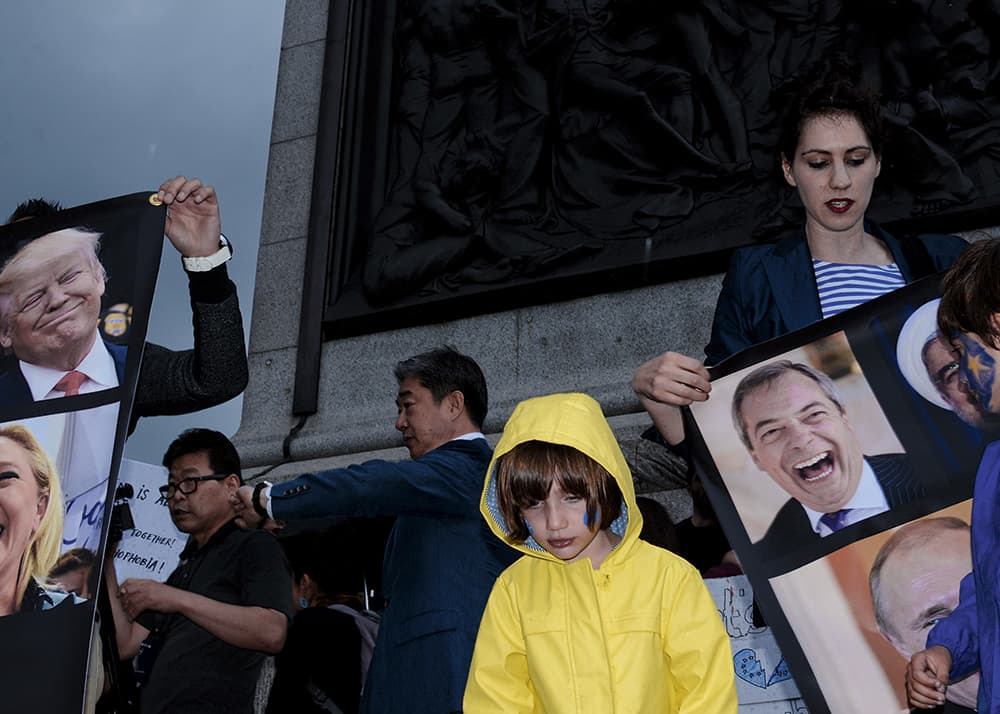
Faces on adverts, billboards or even demo placards can be used to great effect in street work. Photo by Marc Fairhurst
10. Never stop being an amateur
I will never stop trying to be a better photographer, but I am not under the illusion that every time I head out I am going to find something and I am going to create something amazing. A little of the process of what makes a good street photograph is being aware of your surroundings all the time and of the potential that an interesting scene could unfold – the rest is really down to you. The play may have already begun; you just have to decide where best to sit and observe it. So be bold, be brave and have fun with it all, and if someone gets angry, clenches fists and heads your way – leg it.
Linda Wisdom
Linda is an award-winning photographer and course leader from London, who specialises in street photography and social documentary. Linda works mostly in black & white. Visit www.lindawisdomphotography.co.uk and www.etsy.com/uk/shop/LondonStreetPhoto
11. Timing is everything
A fraction of a second can mean the difference between a good photo and a great photo. To ensure you capture those decisive moments, keep your camera switched on and regularly check your exposure settings (especially if you shoot manual and move from dark or lighter areas). I’ve made the mistake of turning off my camera to save battery life and missing a shot, or making a mess of the exposure because I forgot to check it before shooting. Also avoid ‘chimping’ – you are potentially missing out on capturing your next great photo.

Wideangle lenses used in tunnels and pedestrian areas can help to lead the eye into an image, with figures adding a sense of scale. Photo by Linda Wisdom
12. Get up close
Using a wideangle lens will enable you to get nice and close to subjects. The main advantage is that it gives the viewer a real sense of being there in the moment and seeing what you saw with your own eyes. Wideangle lenses also tend to be much smaller, so they won’t stand out and you can blend in with your environment. If you are using a fixed or smaller lens, then you will have to zoom with your feet as you walk down a busy street, park or market. When I am right up close in someone’s face I am often unnoticed or people assume that I am taking a photo of someone behind them. Getting up close can also help filter out any other visual distractions and encourage eye contact.

Metering can be a headache in variable city light at night, so check exposure and ISO before you start blasting away. Photo by Linda Wisdom
13. Night time is the right time
After dark is one my favourite times to shoot. The city lights up with interesting light sources, such as lampposts, shop windows, neon signs and car lights. Boring locations during the day can suddenly turn ominous and fascinating at night, and people get dressed up for a night on the town. However, make sure you use a fast fixed lens that sucks in more light – a 50mm f/1.8 can be better than a slower zoom. Pay attention to the main light sources in a scene. Start by finding a beautiful light source, or an area with good lighting, and wait around for something to happen.

Often, a lot is happening on the street, so your subject needs to be strong and distinctive and stand out. Patience pays off. Photo by Linda Wisdom
14. Keep an open mind
A lot of people wrongly associate street photography with having to be right in people’s faces with a camera or just taking street portraits. You don’t always need to be up close and personal, shooting interesting juxtapositions or fitting as many different people into a frame (or even have people in your photos at all). There are unlimited opportunities for all kinds of images with or without people.
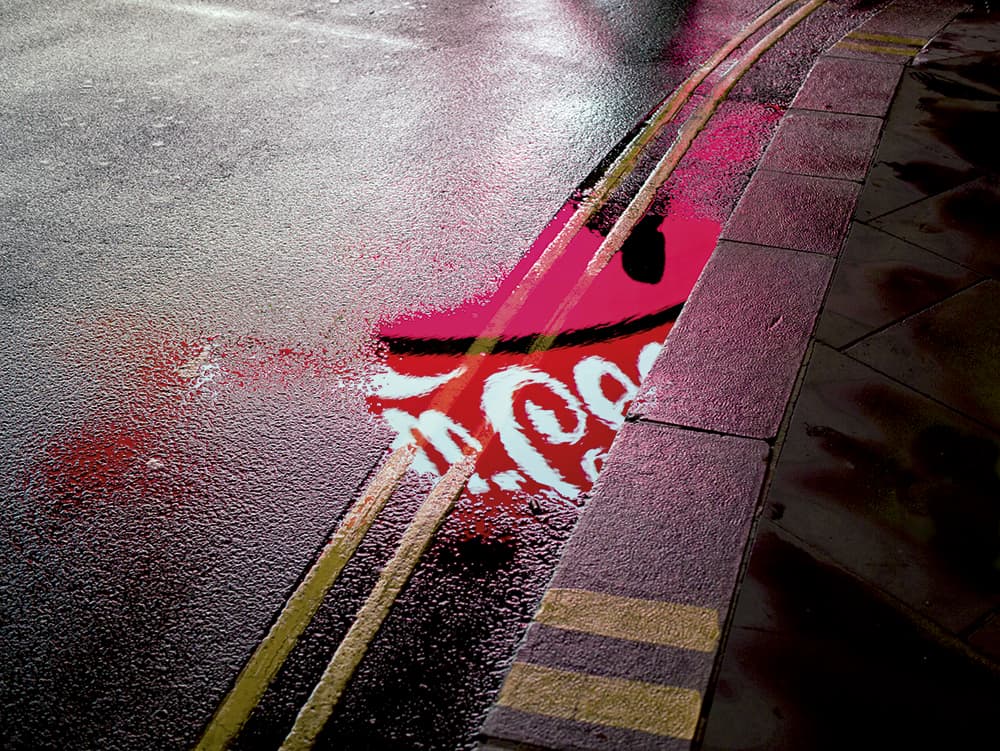
Not many interesting people around on a wet night? Reflections in puddles are a classic street-photography staple. Photo by Linda Wisdom
15. Find your own style
Street photography is about how you see the outside world. Look at your work and see if you notice any recurring themes or subjects. Also, critique your own work. Ask yourself what catches your eye the most when you are out and about. Is it geometry, emotion, composition, juxtaposition or colours? Does your mood change what you’re out photographing? Do what makes you happy. The more you go out and take photos, gain confidence and train your eyes to see details, the more you will develop your personal style.

